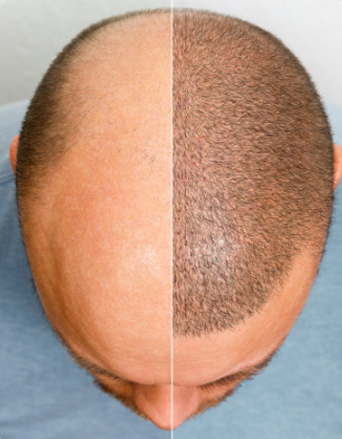Understanding the Shock Shedding Process After Hair Transplant in 6 Basic Steps
Shock shedding is a common reaction to hair transplantation. It occurs when the transplanted follicles, which are still in their “resting” phase, are suddenly exposed to the new environment of the scalp. While this can be a concerning experience for patients, it is a normal part of the hair transplant process and should not be a cause for alarm. Therefore, we need to explain everything about shock shedding in this blog post.
What is Shock Shedding?
Shock shedding is a normal part of the hair transplant process and occurs when the transplanted follicles enter their telogen phase. During the telogen phase, the follicles stop growing and shed their hair. This shedding is often triggered by the stress of the transplantation procedure and the change in environment from the donor area to the recipient area. It is essential to note that while shock shedding is a normal part of the process, it is not a sign of improper technique or failed transplant.
Why Does Shock Shedding Occur?
Regardless of the procedure used to transplant hair, the hair grafts are briefly cut off from the blood supply, which prevents the body from supplying them with nourishment, which causes shedding. It can be expected, but sequence and pattern of occurrence may differ from patient to patient.
When Does Shock Shedding Occur?
It typically occurs within the first two to three months post-transplantation. However, it can occur as early as two weeks later or as late as four months after the procedure. It is important to note that shock shedding does not occur in all patients and can vary from person to person.
What Can Patients Expect During Shock Shedding?
During the shock-shedding process, patients may notice their newly transplanted hair thinning or falling out. While this can be concerning, it is important to remember that the hair follicles are still intact, and the shedding is only temporary. The shedding should slow or stop completely within the first three months post-transplantation, and the hair should regrow.
How Long Does Shock Shedding Last After Hair Transplant?
Shock-shedding is a common side effect of hair transplantation. It is a period where a patient may experience some temporary loss of their transplanted hair. As the new hairs are settling into their new environment, the scalp undergoes a period of shock. During this period, the hair follicles become dormant, and the hair can become weak and easily fall out. Generally, shock shedding usually starts to occur 2-3 weeks after the procedure and can last up to 2-3 months.
How Can Patients Manage Shock Shedding?
Patients can help manage shock shedding by following their doctor’s post-procedure instructions and avoiding activities that may cause additional stress to the scalp. This includes refraining from tight hairstyles, harsh chemicals, and excessive heat. Additionally, patients should be sure to take any medications prescribed by their doctor and use any topical solutions as directed.
There is no known technique to completely eradicate the possibility of shock loss after surgery. Patients can prevent further loss, nevertheless, by using either Finasteride or minoxidil. The amount of dihydrotestosterone in the scalp is decreased with finasteride. For many people, this stops hair loss and thickens hair. You can use a solution called Minoxidil to thicken thinning sections of your hair.
Conclusion
Shock-shedding is a normal part of the hair transplant process, and you should not be a cause for alarm. While it can be concerning, it is vital to remember that the hair follicles are still intact, and the shedding is only temporary. By following their doctor’s post-procedure instructions and avoiding activities that may cause additional stress to the scalp, patients can help manage the shock-shedding process and ensure successful results. At Esvita Clinic, we inform all our patients before and after the hair transplant surgery about possible risks and outcomes.







 EN
EN IT
IT FR
FR ES
ES DE
DE

